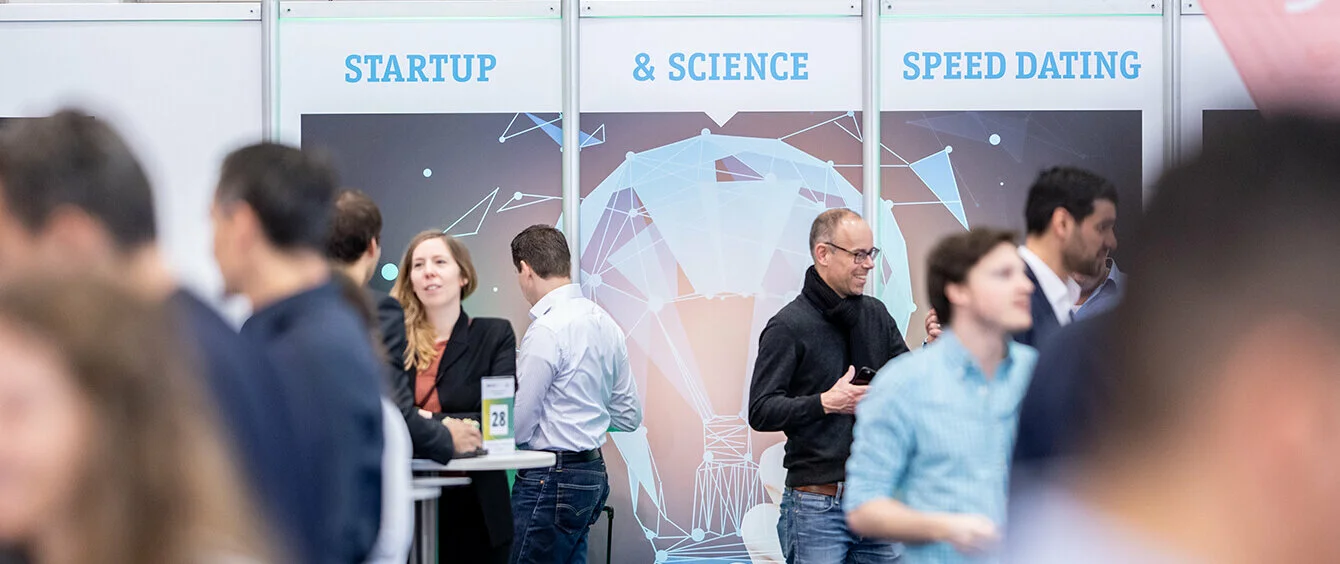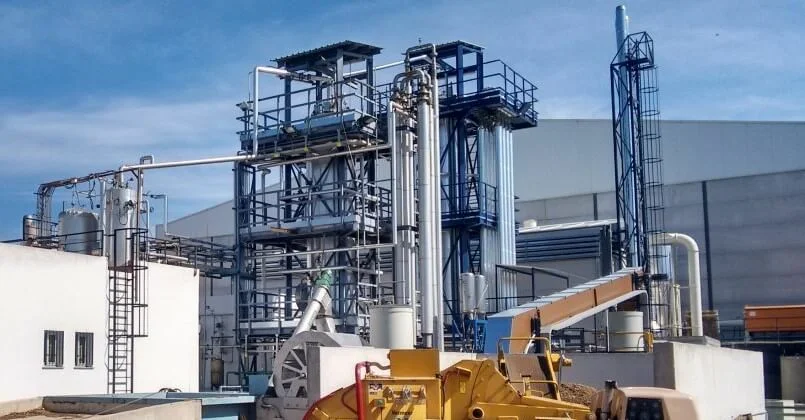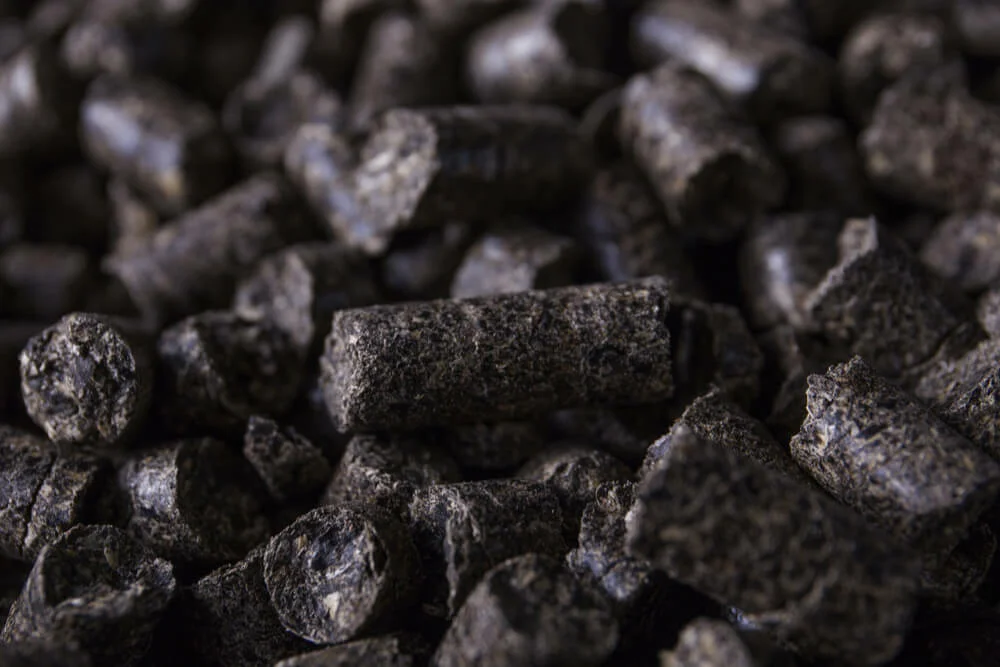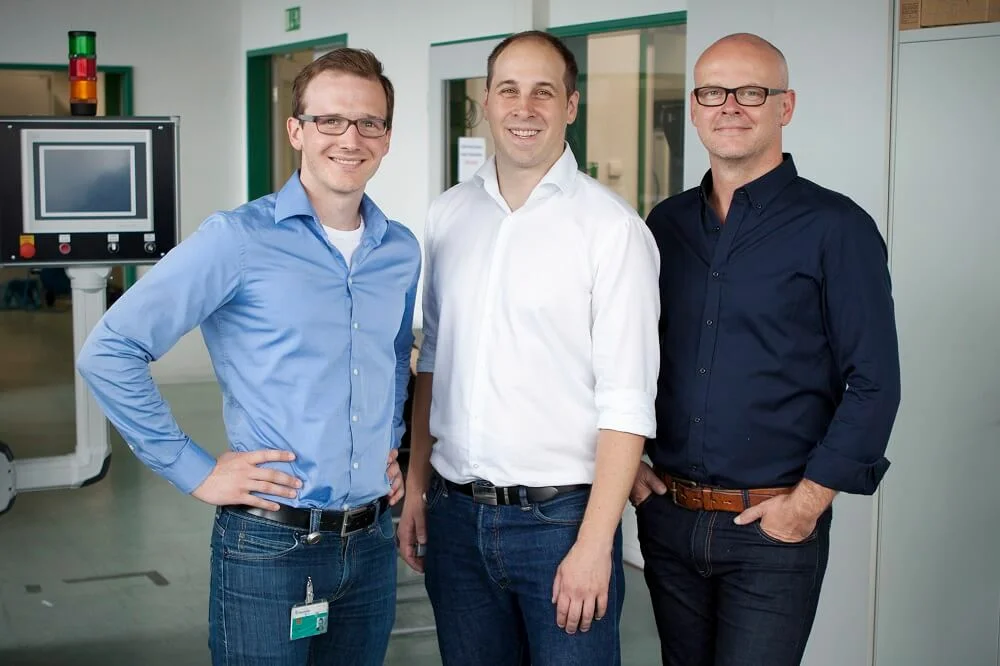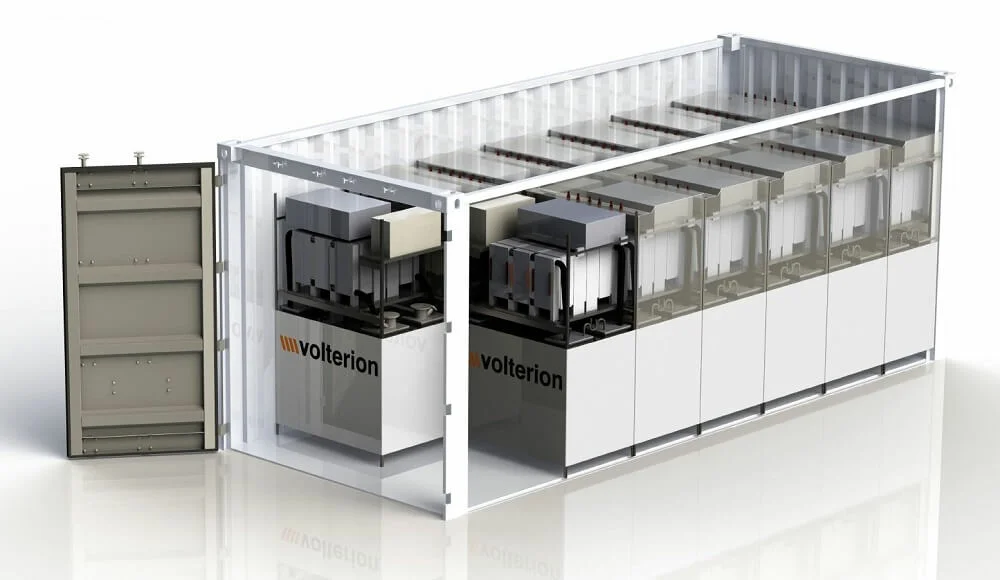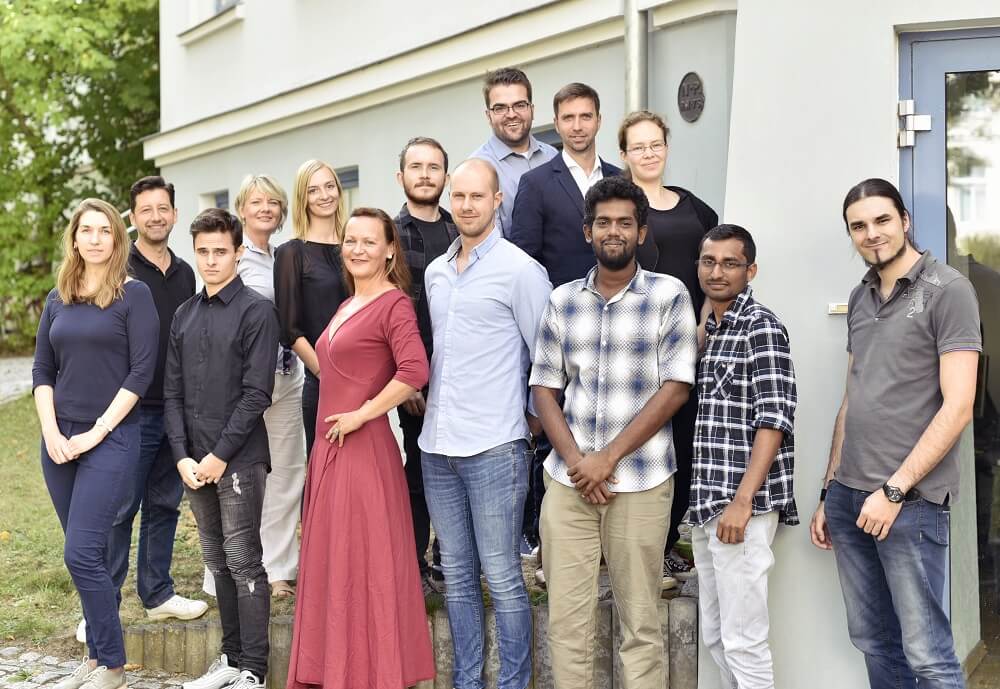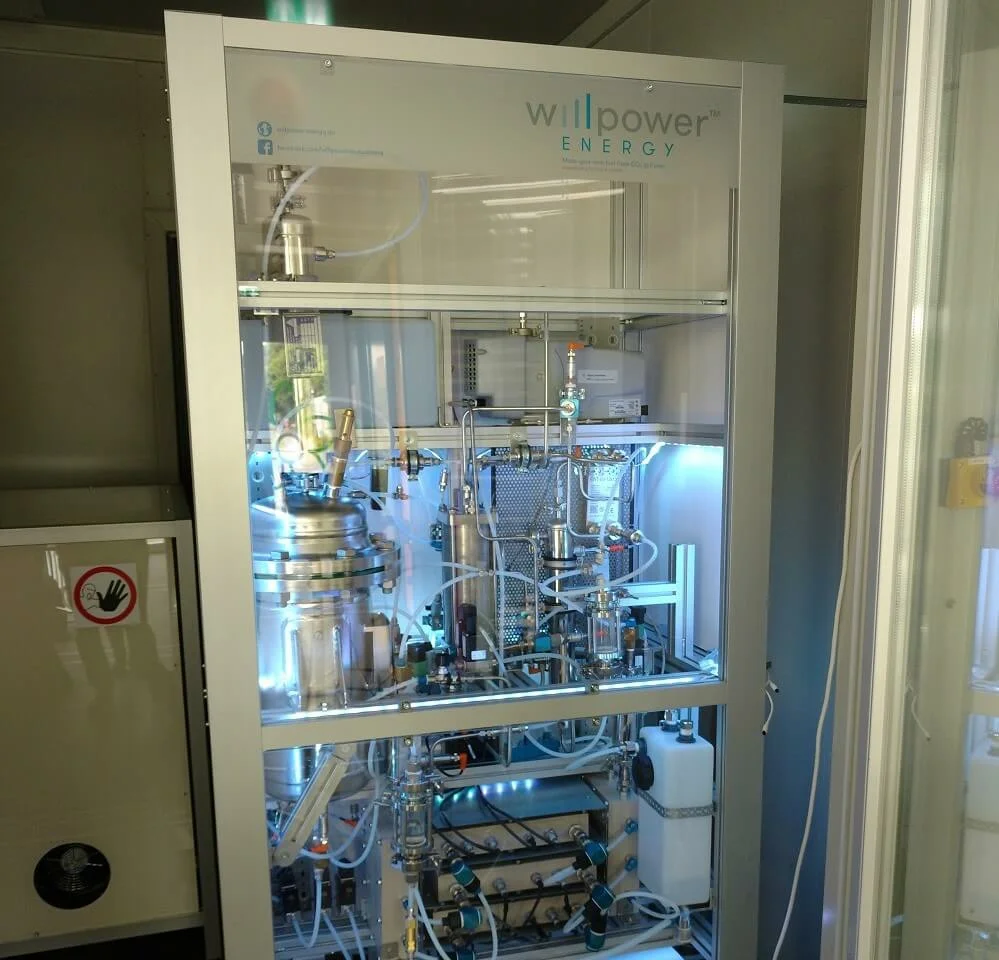In early February, the energy industry came together in Essen for the E-world trade fair. In exhibition hall 4, everything is that bit smaller and simpler. Whilst the other halls feature large, elaborately-designed stands with espresso bars and huge flat screens, here the exhibitors mostly confine themselves to a table, a few display boards, and a laptop. And rather than speciality Italian coffee blends, there is at most a filter coffee machine, gurgling away in a corner.
There is a reason it is all so back-to-basics: hall 4 is home to entrepreneurs and young firms which have not been on the market long, some of whose products are still in the development phase – a time in a company’s life when every penny counts. Several of the start-ups are here at the invitation of InnoEnergy, a firm that promotes innovation in the European energy industry.
Many of the mostly young company founders and employees are here to present their innovative new business ideas to a specialist audience. The range of projects presented is impressive: several offer new digital platforms for power trading, others strive to optimise electricity grids or digitally control and monitor domestic heating using new software.
The en:former team paid a visit to hall 4 and spoke with the founders of three start-ups, whose exciting projects we present below.
Ingelia
Spanish start-up Ingelia produces biochar from wastewater and organic waste. This climate-neutral fuel can be used to generate power and heat.
How does the technology work?
The method used is hydrothermal carbonisation (HTC), which was discovered over 100 years ago by Friedrich Bergius, who later won the Nobel Prize. Spanish start-up Ingelia has enhanced the HTC process and applies it on an industrial scale. In one example, industrial sludge and organic waste are dried at temperatures of around 200 °C and a pressure of 20 bar and the liquid is extracted by suction. When the process is complete, after around eight hours, it leaves a dry material which can subsequently be pressed into pellets, known as biochar.
How does it help?
Ninety-five percent of the carbon in the wastewater is rendered usable, whilst substances like sulphur and chlorine – which are problematic in high concentrations – are extracted along with the liquid. The biochar can replace fossil fuels for power and heat generation. It is considered CO2-neutral because it uses carbon from wastewater and materials. The firm calculates that from 2022, its procedure could replace up to 220,000 tonnes of coal every year.
A word from the founders/managers?
“Using our process, we can produce CO2-neutral biofuels in a short space of time”, says Ingelia co-founder Marisa Hernández.
How has the technology been used so far?
The first industrial-scale HTC plant in Valencia (Spain) has been operational since 2010. In 2014, a second reactor was added. Last year a second plant opened, this one in the UK, which is also set to be upgraded.
And in future?
Further plants are planned in Italy and Belgium. The start-up is looking to collaborate with waste disposal firms. If produced on an industrial scale, biochar could also be used in power plants or in steelmaking.
Who is involved?
The Spanish firm is headquartered in Valencia and has twelve permanent staff.
Volterion
One challenge facing the energy industry is how to store power from renewables, which as we know is highly intermittent. One solution might be redox flow batteries, which Dortmund start-up Volterion is currently developing.
How does the technology work?
In redox flow batteries, electrical energy is converted to chemical energy, meaning it can be stored in an electrolyte. Since this liquid electrolyte is stored in tanks, redox flow batteries are often called liquid flow batteries or simply flow batteries. Volterion specialises in the development and manufacture of the energy converter, known as the stack. The start-up aims to expand the potential applications of redox flow batteries by making the stack – one the system’s core components – more compact and less expensive.
How does it help?
Redox flow batteries have various advantages over lithium ion batteries, which are commonly used in, for instance, electric cars. Their greatest asset is that they have a long life-span and can be charged and recharged almost without limit. The liquid used does not leak and is not flammable. Furthermore, capacity can be increased relatively easily and cheaply by simply using more electrolyte and bigger tanks. Redox flow batteries do have one downside, however: their energy density is much lower than that of fuels or lithium ion batteries, making them relatively large and heavy. They are thus not a technology suitable for electro-mobility.
A word from the founders/managers?
“Our ambition with our redox flow batteries is to achieve the lowest price per stored kilowatt hour in stationary energy storage”, says Volterion co-founder Thorsten Seipp, who heads up the Product Development and Process Technology departments.
How has the technology been used so far?
Various pilot projects, mostly with local energy suppliers, are underway in Germany to test the use of redox flow batteries. Larger-scale projects are on the drawing-board.
And in future?
The start-up considers the technology to be of primary interest to industrial and commercial customers which produce their own electricity from renewable energy sources. Applications with high cycle lives and high output, in particular, could save money using this storage technology. For example, firms whose business is characterised by frequent output peaks. Another application is peak shaving: with increasing numbers of electric cars on the roads in future, these batteries could help grids absorb the resultant spikes in demand.
Who is involved?
The start-up was founded by scientists from UMSICHT (an institute of the Fraunhofer Society), who had previously spent years researching the technology. Including students, 18 people work at Volterion in Dortmund.
willpower energy
Another start-up, willpower energy, is also working on energy storage, albeit on a much smaller scale – they are focusing on the home and are developing a power-to-liquid (PtL) facility for individuals.
How does the technology work?
The device uses surplus power from renewable energy plants to produce methanol. In an electro-chemical reactor roughly the size of a gas boiler, enzymes convert water and carbon dioxide to methanol. The carbon dioxide is filtered directly from the air. The conversion process takes place at low temperatures and pressure, making it eminently suitable for domestic use. The methanol thus obtained is first stored in a tank before being used in various applications.
How does it help?
Methanol can be used for heating purposes (in a mini block-type CHP station) or to generate electricity (in a fuel cell). The fuel obtained is considered climate-friendly if the electricity is produced by regeneration and the CO2 is filtered directly from the ambient air. If these conditions are met, the whole process can be said to be CO2-neutral. The advantage of methanol is that it can be stored long-term in tanks without loss. With the help of technology, therefore, energy from renewables can now be stored long-term, making it available when it is most urgently needed.
A word from the founders/managers?
“Our climate-friendly process of converting energy and CO2 to methanol is unique in the world, and we have patented the technology. Unlike conventional battery storage, where the battery discharges over time and has limited storage capacity, the only limit to our storage is the size of the tank”, explains Moritz Basler from the Business Development department.
How has the technology been used so far?
A prototype has been around since late 2014. A pilot facility was first trialled in 2017, and is currently being upgraded. The technology is not yet market-ready since the procurement and operating costs are still too high.
And in future?
The power-to-liquid system is designed for households which generate their own electricity, for example via photovoltaic panels on the roof. The start-up is looking around for subsidy programmes and partners in order to improve the technology and generate economies of scale.
Who is involved?
willpower energy has 15 employees and is owned by Rostock-based Gensoric GmbH.
